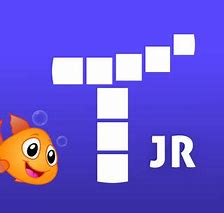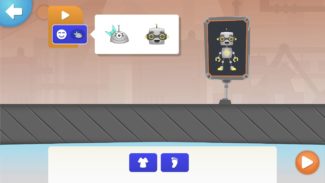Bastion
LQ: 9.15
Recommended Age: 10+
Skills Used: Planning, Working Memory, Mathematics, Reading

Tynker Jr is a coding game for 4 to 7 year old children. There are several different worlds–such as an underwater one, robot one, and wild animal one. Each of them have slightly different aspects of coding that they cover. The ocean world is completely free. Each of the other worlds have limited levels available without making a purchase.
This game starts out with very simple coding problems that can be solved in one move. It gets steadily more complicated, adding a new concept every couple of levels. Tynker Jr uses cute, cartoon graphics and bright colors to convey these concepts.
The app offers in-app purchases in the form of monthly and yearly subscriptions to unlock all the levels. The ESRB rated this game E for Everyone. It is, however, geared for early childhood players. LW4K stands by this rating, although later levels can still provide thinking skills practice for older players who are unfamiliar with coding practices.
Tynker Jr helps kids practice and improve the following skills:
 Organization
OrganizationArranging and coordinating materials in order to complete a task.
Coding in general, and Tynker Jr specifically, is an ideal opportunity for practicing organizational thinking skills. The player has to be able to organize their ideas if they are going to remember the concepts of coding. They also need to be able to organize places and things in order to program the character to complete its challenges. If they can't decide which way to move the character (organizing things) and how to make it move that way (organizing ideas), the player will not be able to complete the level and unlock the next one.
Developing a systematic approach for setting and achieving goals.
While early levels of Tynker Jr are very simple, the further into the game a player gets, the more they have to stop and evaluate the level before setting up a code to complete it. Since the levels are short--only requiring three to six moves to beat a level--the player will need to use his or her short-term planning skills. If they don't take the time to actually think and plan out the order of the code before programming the level, they will have a hard time beating it. In order to make the best plans, however, they will also need to use their problem solving skills. The order of the code does make a difference in whether or not they collect all the coins and make it out of the maze. Without combining both of these thinking skills, the player will be unable to complete levels and unlock new ones.
All membership plans come with full access to our entire suite of tools learning guides, and resources. Here are a few of the ones we think you’ll like the most: